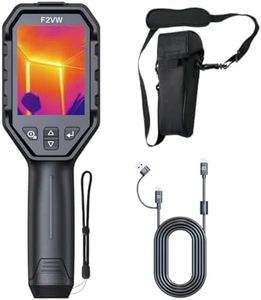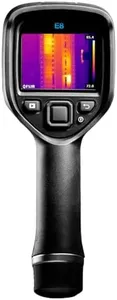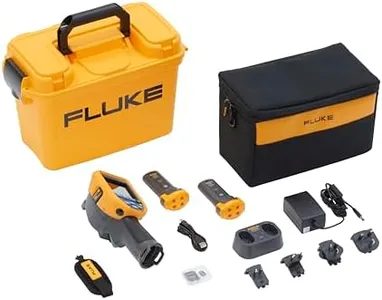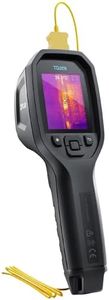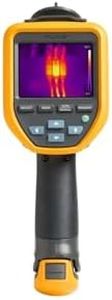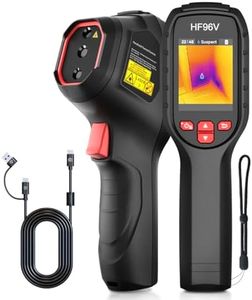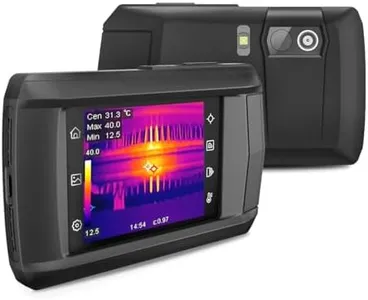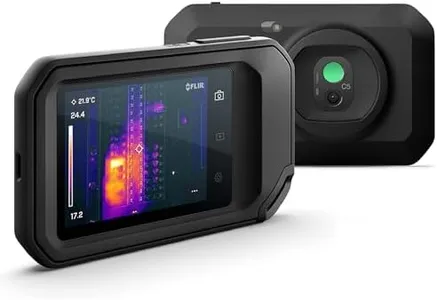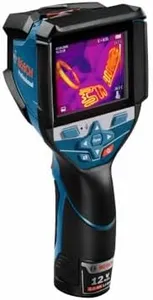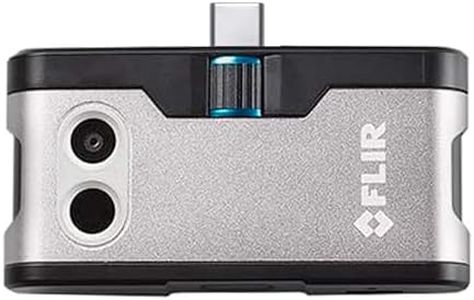10 Best Thermal Imagers 2025 in the United States
Our technology thoroughly searches through the online shopping world, reviewing hundreds of sites. We then process and analyze this information, updating in real-time to bring you the latest top-rated products. This way, you always get the best and most current options available.

Our Top Picks
Winner
FLIR E8-XT - Commercial Thermal Imaging Camera with WiFi. High Resolution Infrared Camera Ignite Cloud
Most important from
270 reviews
The FLIR E8-XT is a handheld thermal imaging camera designed for a variety of applications, including outdoor security and troubleshooting in commercial environments. One of its standout features is its high resolution of 320 × 240 pixels, which allows users to identify and troubleshoot hidden faults effectively. The incorporation of patented MSX technology enhances images by overlaying visual details on thermal data, making the images clearer and more informative. With a temperature range from -20 to 550°C, it covers a wide spectrum, catering to various needs in both industrial and residential settings.
The FLIR Ignite Cloud integration is another strong point, offering users a convenient way to store, edit, and share thermal images efficiently. The camera’s wireless connectivity is also a plus, making it easy to transfer data without the hassle of cables. Additionally, the generous warranty of 2 years for parts and labor and 10 years for the detector provides peace of mind regarding the product's durability and reliability.
There are a few aspects that could be drawbacks for some users. Firstly, while the E8-XT is portable, it may not be the most lightweight option available, which could be a consideration for those needing to carry it for extended periods. The battery life, while adequate for most tasks, might not meet the demands of all-day usage in demanding environments, so planning for charging or spare batteries may be necessary.
Most important from
270 reviews
Fluke TiS75+ 27HZ, Thermal Imager
The Fluke TiS75+ is a thermal imager that stands out for its ruggedness and reliability, making it suitable for industrial settings where tools may face harsh conditions. With a tough design that can endure a 2-meter drop and an IP54 rating for water and dust resistance, it’s built to last, which is a strong advantage for maintenance professionals and field technicians.
In terms of functionality, this thermal camera offers features like asset tagging and voice annotation. Users can sort thermal images by asset and record real-time observations, which can significantly enhance the efficiency of maintenance programs. The ability to connect to a computer for easy image organization is also a plus, as it allows for better tracking of inspections over time.
There are some considerations to keep in mind. While the rugged design is a strong selling point, the weight of 7.55 pounds may be cumbersome for extended use, especially when carrying it around job sites. Additionally, users looking for advanced imaging features such as image fusion might find the TiS75+ lacking. Battery life is essential for fieldwork, and while it’s not detailed in the specifications, it’s important to consider if it meets your operational needs. The Fluke TiS75+ thermal imager is well-suited for those who value durability and practical features for asset management, but it may not be ideal for users needing more advanced technical capabilities or a lighter device.
Fluke FLK-TIS60+ 30HZ, Thermal Imager; GT1; 30 HZ
The Fluke FLK-TIS60+ 30HZ thermal imager is a robust tool for professionals who need accurate thermal imaging in their work. One of its standout features is the Fluke Connect, which allows you to manage, capture, and organize data efficiently. The IR-Fusion technology is particularly beneficial as it lets you adjust the level of infrared and visible light, providing clearer images.
Additionally, voice annotation and IR Photo Notes help in simplifying work orders by enabling accurate information capture, making it easy to use even with minimal training thanks to its touchscreen and point-and-shoot fixed focus functionality. The device is equipped with a Class 2 Laser, which is safe for normal operation. This makes it straightforward for users to get started without extensive training or safety concerns.
Battery life seems adequate with two included Lithium-Ion batteries, but this could vary with usage. Durability and build quality are typically strong points for Fluke products. Connectivity and software support are strong with Fluke Connect, ensuring that data management is seamless. This thermal imager is ideal for professionals in industrial and scientific fields who need reliable and easy-to-use imaging tools.
